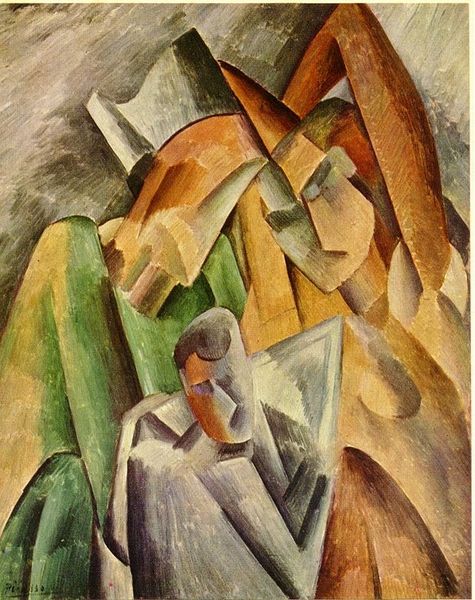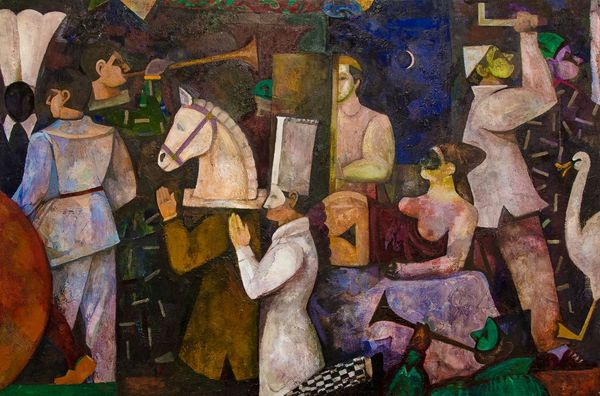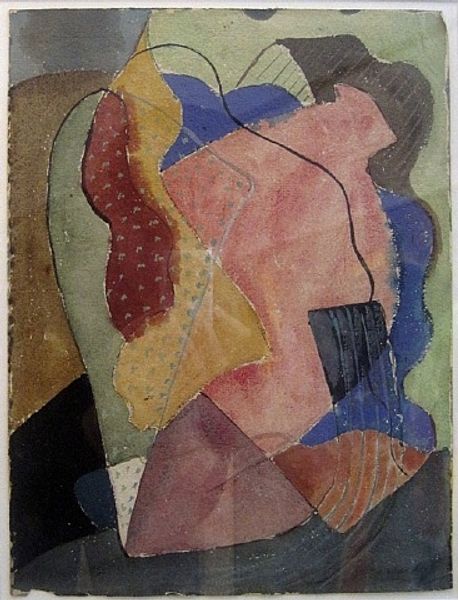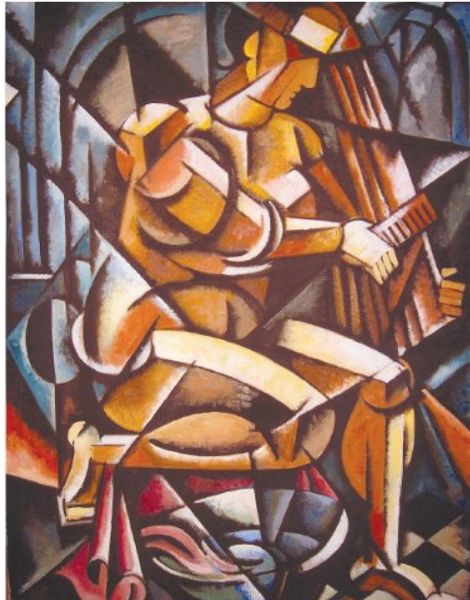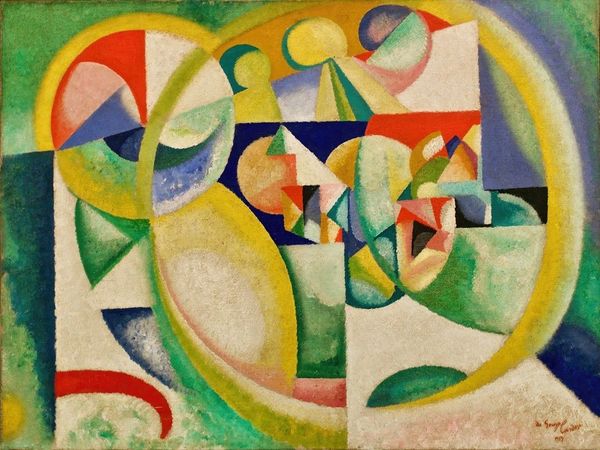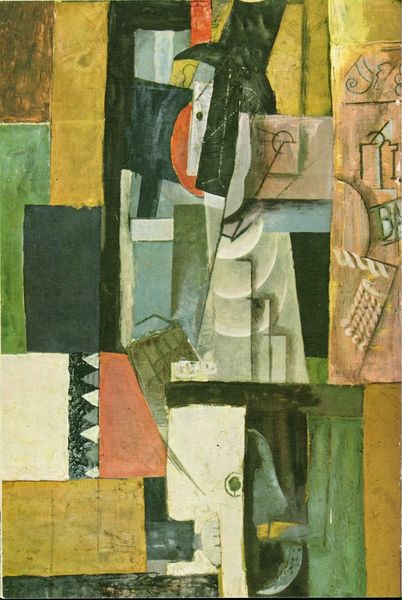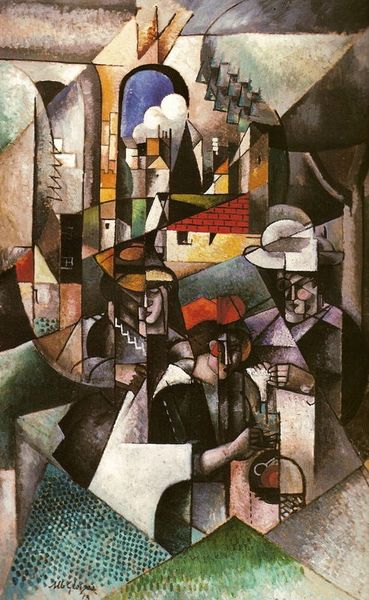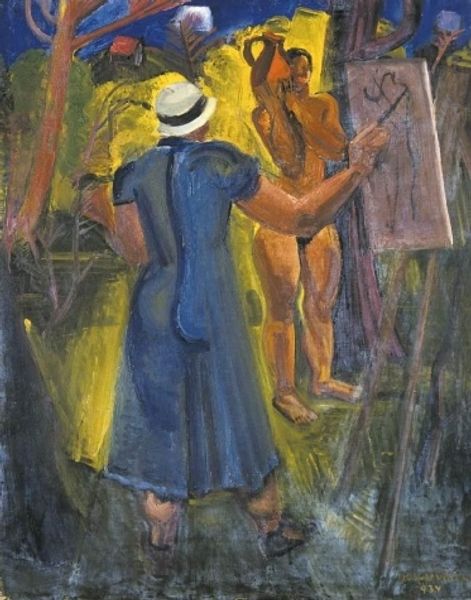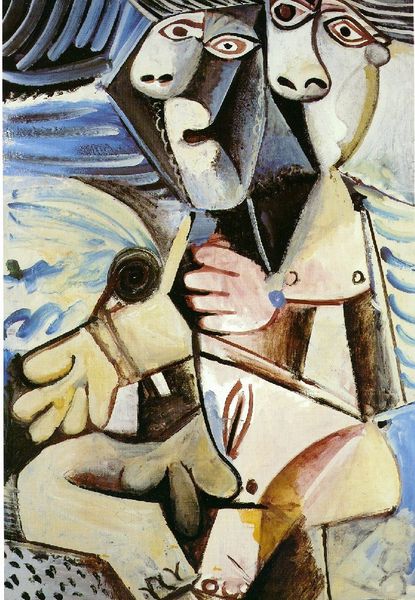
oil-paint
#
portrait
#
cubism
#
oil-paint
#
figuration
#
oil painting
#
geometric
#
cityscape
Copyright: Public domain US
Curator: Diego Rivera painted "Woman at a Well" in 1913. Currently residing in the Museo Nacional de Antropologia in Mexico City, this oil painting presents us with Rivera’s exploration of Cubism. Editor: My immediate impression is one of fragmented stillness. There’s a remarkable geometric quality and earthy color palette that renders the subject—a woman fetching water—both familiar and oddly distant. Curator: It's crucial to understand that this work comes from Rivera’s Parisian period, a time when he engaged deeply with European modernism, while still subtly embedding themes related to the labor and daily lives of ordinary people, echoing a quiet dignity. Editor: Agreed, yet it's also an exceptional example of how he’s deconstructing form through the planar arrangements. Notice the carefully calibrated juxtaposition of colors. The soft pink against the greens and blues creating dynamic tension, forcing the eye to consider each plane independently and as part of a whole. Curator: Precisely. Rivera uses the cubist structure to fragment not just the figure but the whole scene, emphasizing the laborious task through visual disarray. The well, for example, merges almost seamlessly with the cityscape. Editor: The almost architectural structuring is interesting too, layering forms and drawing focus on the almost abstract nature of the pitcher, creating a juxtaposition between an everyday action and geometric exploration. Curator: Yes, the abstraction is essential for him to insert a political commentary. This seemingly simple act of carrying water becomes a statement on labor and societal structure when filtered through a modern lens. It underscores how even in a globalized avant-garde context, indigenous life perseveres, a quiet resistance if you will. Editor: I would agree, what I take away from its composition is not only its complexity, but its balanced visual language, something Rivera really pushes in his Paris years before returning to Mexico. Curator: "Woman at a Well" reminds us how movements like Cubism were interpreted differently across the globe, reshaped by different experiences and socio-political contexts. Editor: Ultimately, the work highlights the importance of a painter's vocabulary, showing a pivotal point for a great muralist to come.
Comments
No comments
Be the first to comment and join the conversation on the ultimate creative platform.

